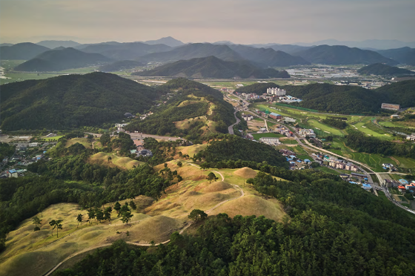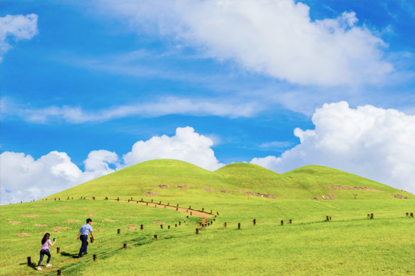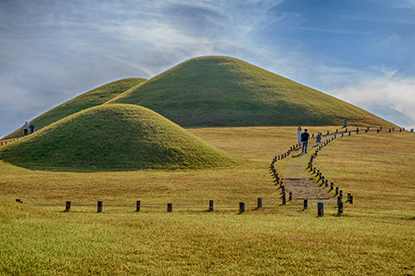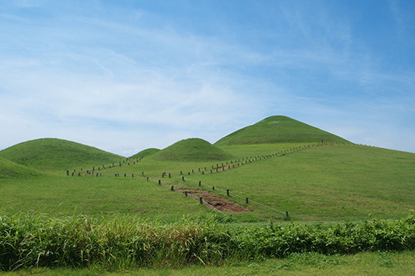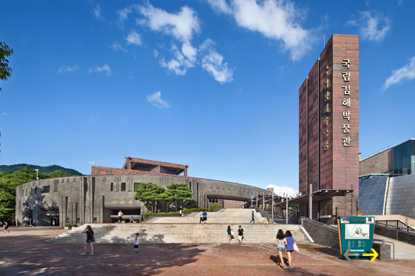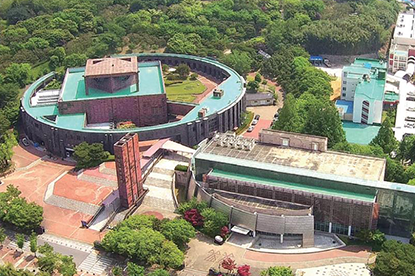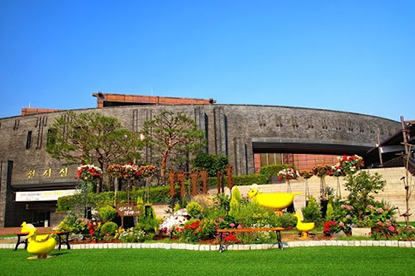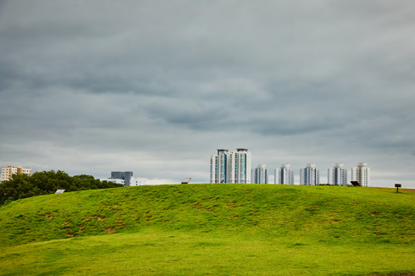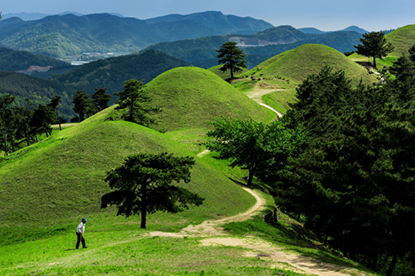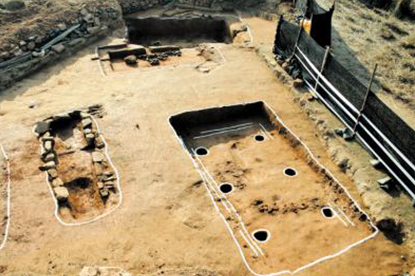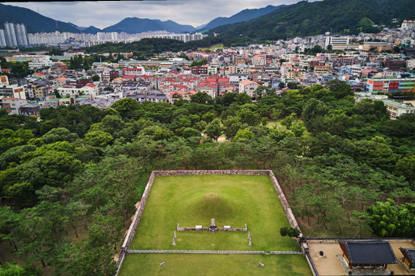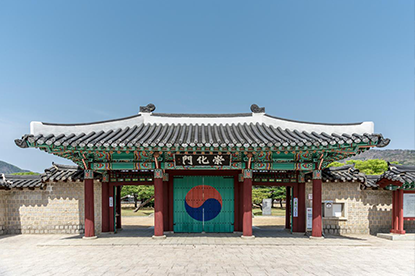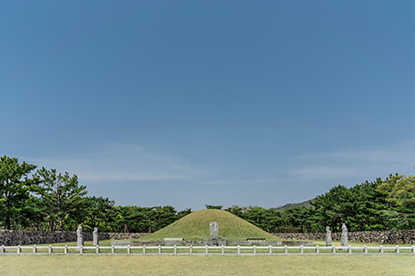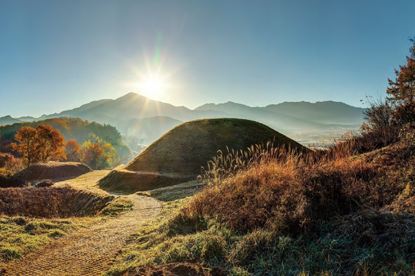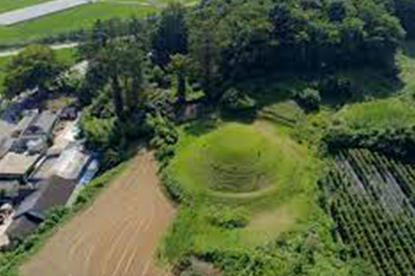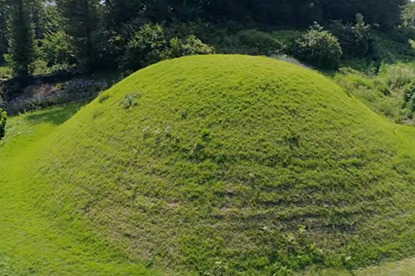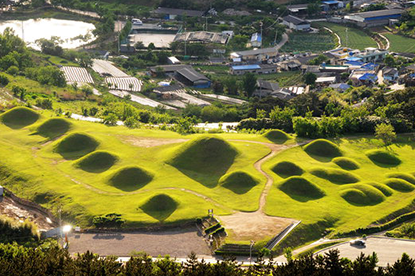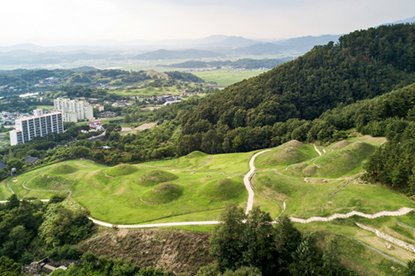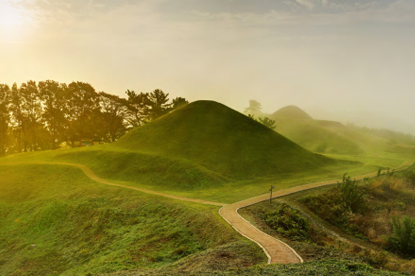Cultural Heritage Passport Tour
- Incheon International Airport PR Center (Traveler Center)
- Gaya Culture Route
- Gwandong Pungryu Era Route
- Baekje Antiquity Route
- Korean Temple Monasteries (Sansa) Route
- Korean Confucian Academy Route
- Prehistoric Landscape Route
- Mythic Landscape Route
- Folk Music Route
- Royalty Route
- Golden Era Route
Goryeong, Goseong, Gimhae, Namwon, Changnyeong, Haman, Hapcheon
– Gaya, a Shining Beacon of Iron Age Culture
The southern part of the Korean peninsula is home to countless ancient tombs, most of which were created during the Gaya period. These ancient tombs offer a great snapshot into the history, nature, culture, and legacy of the long-lost kingdom of Gaya. The production and distribution of iron-made products drove social change and development in ancient societies. The sheer number of iron artifacts discovered in these tombs proves just how important iron was in the Korean peninsula. Gaya was a federation of twelve small kingdoms in the Byeonhan region of Korea. In total, there were six Gaya kingdoms, including Geumwan Gaya in Gimhae and Daegaya in Goryeong. Together, the Gaya kingdoms traded with Nakrang, China, Japan, and other regions of the Korean peninsula thanks to an abundance of iron. Naturally, Gaya were skilled navigators both on land and out at sea. Based on their shape and size, Gaya tombs, which the Korean government has applied for UNESCO Cultural Heritage status, are a window into the culture, history, and natural environment of Gaya as the kingdom evolved from the early Gaya to late Gaya from the 1st century BCE to the 6th century CE. The Gaya tombs are not only unique evidence of the sophisticated civilization and political system that Gaya managed to build as a federation of small states despite being surrounded by other ancient kingdoms with more consolidated power structures, but also a great example of a rare type of civilization that thrived in ancient East Asia.
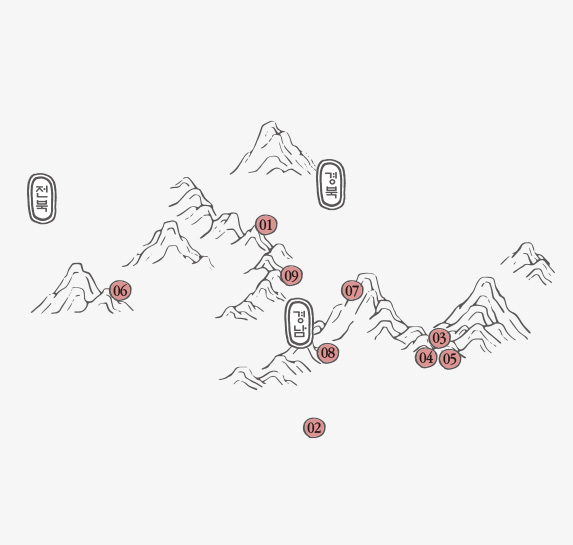
The Gaya Culture Route is easy to access via public transportation, except for some regions in Goryeong and Hapcheon. Traveling to Goryeong or Hapcheon on public transportation requires multiple transfers. Your best bet is to drive or rent a car from Dongdaegu station. Gimhae is easy to get to by train and bus. Given that the three cities are fairly close to one another, you could visit all of them in one day. The most convenient locations to reach using the public transportation system are Goseong and Changnyeong. All you need to do is take the express bus, which will take you directly to your destination, from the bus terminal in whichever city you are traveling from. If you are looking for a travel option that keeps transfers along the way to a minimum, we recommend Goseong and Changnyeong. The ancient tombs in Namwon, Jeollabuk-do, are also conveniently located if you are traveling on public transport, especially by train. Aside from Gimhae, Namwon is a fair distance away from the other Gaya cities. So, we recommend spending time in one city a day.
Flavors of Goryeong, Goseong, Gimhae, Namwon, Changnyeong, Haman, and Hapcheon might just leave a lasting memory
-
Hapcheon Bammuk (chestnut jelly)
Local specialty using chestnuts harvested in Gahoe, Daebyeong, and Yongju-myeon (in Hapcheon-gun)
-
Sanchae Baekban (vegetables and rice)
A table full of dishes, including freshly cooked eco-friendly rice, various vegetables (wild vegetables and herbs) that either grow near Gayasan Mountain or are farmed in nearby areas, as well as cooked fish (24 dishes in total).
-
Namwon Chueotang (loach and bean paste soup)
Chueotang, made with locally grown loach farmed in the clean and fertile land of Namwon, is famous as a nourishing local specialty.
Cultural heritage festivals in Goryeong, Goseong, Gimhae, Namwon, Changnyeong, Haman, and Hapcheon
-
Gaya Culture Festival (Gimhae)
The Gaya Culture Festival, the premier culture and art festival of the Gimhae region, celebrates the founding of Garakguk by Kim Suro, and it carries on the legacy of Gaya’s sophisticated culture to promote the values of harmony and unity among locals and visitors. For more details, please check the festival’s official website below.
For more details, please check the festival’s official website below.
Website www.gcfkorea.com
-
Daegaya Festival, Goryeong
Daegaya thrived for 520 years in the Korean peninsula, and the Daegaya Festival in Goryeong features a large parade inspired by the founding myth of Daegaya as well as a variety of immersive activities and plenty of agricultural products on offer to visitors.
For more details, please check the festival’s official website below.
-
Namwon Chunhyang Festival
Festival filled with love, the Namwon Chunhyang Festival! Head over to the Gwanghallu Pavilion in Namwon with your friends, loved ones, and family for the Namwon Chunhyang Festival.
For more details, please check the festival’s official website below.
Websitewww.chunhyang.org
-
Haman Aragaya Cultural Festival
Haman, the heart of Aragaya from the six ancient Gaya Kingdoms. The Haman Aragaya Cultural Festival celebrates the stability and harmony of Haman with three days of celebrations, cultural events, activities, and folk culture contests to help preserve and pass on the spirit and wisdom of Aragaya.
-
Gimhae Cultural Heritage Night
You can enjoy various historical and cultural activities focused mostly around the royal tomb of King Suro, the landmark cultural heritage of Gimhae, at the Gimhae Cultural Heritage Night.
-
Gimhae Queen Heo Sinhaenggil Festival
The Gimhae Queen Heo Sinhaenggil Festival is a cultural exchange program between Gimhae and India featuring tourism products and festivities inspired by the ancient tale of Queen Heo, a princess from Ayuta, India, who came to marry King Kim Suro of Garakguk in 48 CE.
- Jisan-dong Tumuli, Goryeong
- Songhak-dong Tumuli, Goseong
- Gimhae National Museum
- Daeseong-dong Tumuli, Gimhae
- Tomb of King Suro, Gimhae
- Yugok-ri and Durak-ri Tumuli, Namwon
- Gyo-dong and Songhyeon-dong Tumuli, Changnyeong
- Marisan Mountain Tumuli, Haman
- Okjeon Tumuli, Hapcheon
Okjeon Tumuli in Hapcheon, the essence of Korean burial culture
-
Address
San 29-1, Seongsan-ri, Ssangchaek-myeon, Hapcheon-gun, Gyeongsangnam-do
-
Inquiries
055-930-3176
-
Stamp
Information Desk at the Hapcheon Museum
-
Directions
Get off at the KTX Dongdaegu station → Take the Daegu subway line no. 1 at Dongdaegu station → Get off at Seobu bus stop, walk to the intercity bus terminal (Seobu bus stop), and take a bus bound for the Hapcheon intercity bus terminal → Get off at Hapcheon intercity bus terminal and walk to the regular bus stop at Hapcheon intercity bus terminal → Take the bus bound for Hapcheon-Podu → Get off at Jinjeong bus stop → Walk for 10 minutes
The Okjeon Tumuli are located in Okjeon Village at Seongsan-ri, Ssangchaek-myeon, Hapcheon-gun, and are a group of tombs built during the Gaya period, dating from the 4th to early 6th centuries CE. Archaeologists believe there are more than 1,000 tombs in the Okjeon Tumuli cluster, which take up an entire hill on the banks of Hwanggang River (a tributary to the Nakdonggang River). Particularly worth noting are the 18 tombs with diameters between 20~30m that are clustered closer together than the others. According to an excavation survey, burial tombs (wooden tombs), pit-type stone burial tombs (vertical stone burial tombs), pit-type front open stone chamber tombs (vertical cross-section stone chamber tombs), and cave-type stone chamber tombs (horizontal stone chamber tombs) were found in the area. Plenty of relics, including earthenware, iron weapons, armor harnesses, and accessories, were found in tombs that presumably belonged to the more powerful owners. Given the dragon and phoenix sword with a ring pommel, iron armor, gilt-bronze helmet, and iron horse helmet, one of the tombs may have belonged to a ruler of Gaya. The Okjeon Tumuli are an important resource not only in terms of Gaya culture, but also in terms of ancient Korean burial culture as the relics found here can be compared to those from Goguryeo such as the helmet found inside Chongo-ri Sanseong Fortress in Pyeonganbuk-do.
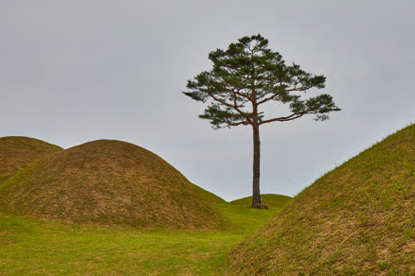
Provided by the Baekje World Heritage Center
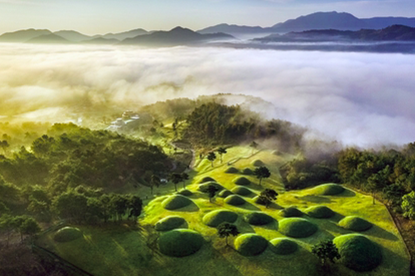
Provided by the Baekje World Heritage Center
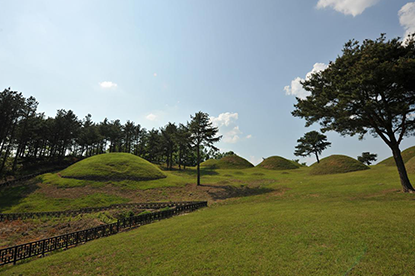
Provided by the Baekje World Heritage Center









